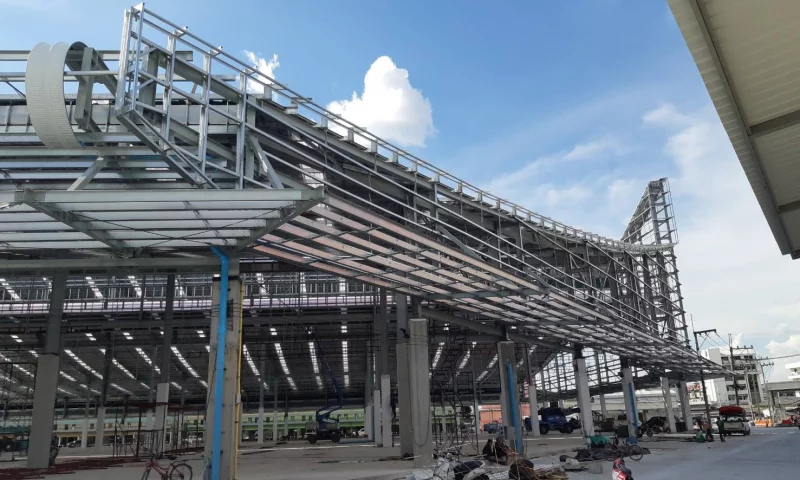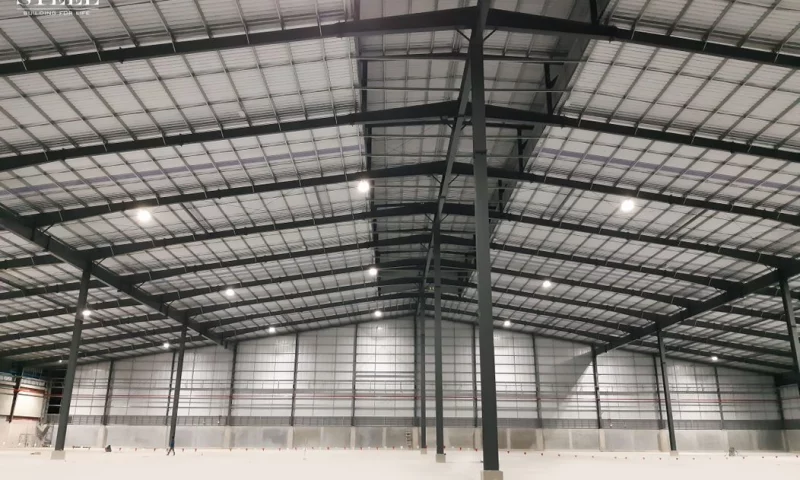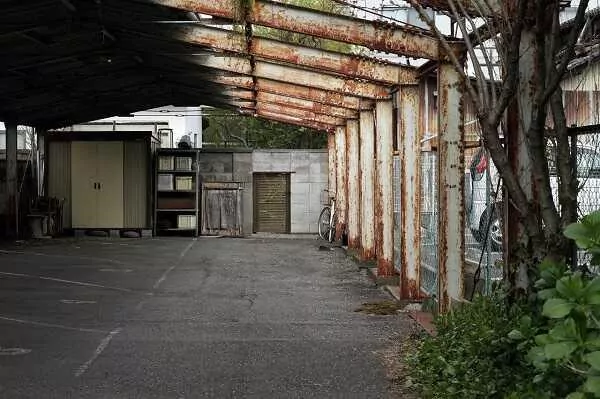When embarking on a construction project, understanding the differences between pre-engineered buildings (PEBs) and prefabricated structures is essential. These two modern construction methods offer unique benefits, and choosing the right option can significantly impact your project’s timeline, cost, and functionality.
What Are Pre-Engineered Buildings (PEBs)?
Pre-engineered buildings (PEBs) are structures designed and fabricated in a factory setting using pre-determined standards and specifications. These buildings are then transported to the construction site, where they are assembled with minimal on-site labor.
Key Features of Pre-Engineered Buildings
PEBs typically consist of a steel framework and various components such as wall panels, roofing systems, and other fittings. These elements are designed to interconnect seamlessly, resulting in quick assembly.

PEBs typically consist of a steel framework and various components
Benefits of Pre-Engineered Buildings
- Faster Construction Time
Since the components are pre-designed and manufactured off-site, construction times are significantly reduced compared to traditional building methods. - Cost-Effectiveness and Energy Efficiency
PEBs minimize waste during production and offer energy-efficient design options, such as insulated panels that reduce heating and cooling costs. - Design Flexibility and Customization
With advanced engineering software, PEBs can be tailored to meet specific aesthetic and functional requirements, from warehouses to retail spaces.

Since the components are pre-designed and manufactured off-site, construction times
What Are Prefabricated Buildings?
Prefabricated buildings often referred to as modular structures, are buildings composed of sections or modules manufactured in a factory and then transported to the construction site. Unlike PEBs, prefabrication typically involves a variety of materials, including wood, concrete, and steel.
Types of Prefabricated Structures
- Modular Homes: Residential units built in modules and assembled on-site.
- Office Units: Temporary or permanent office spaces designed for rapid deployment.
- Temporary Structures: Buildings like portable classrooms or medical units.

Prefabricated buildings often referred to as modular structures
Benefits of Prefabricated Buildings
- Reduced Material Waste
Factory-controlled environments ensure precise cutting and assembly, leading to less waste compared to on-site construction. - Reduced Construction Time and Labor Costs
With most of the work done off-site, assembly times and labor costs at the construction site are minimized. - Improved Quality Control
Prefabricated buildings benefit from strict quality checks during the manufacturing process, resulting in consistent and reliable structures.
Key Differences Between Pre-Engineered Buildings and Prefabricated Structures
Pre-engineered buildings (PEBs) and prefabricated structures are often confused, but they have distinct differences:
Advantages and Disadvantages of Pre-Engineered Buildings vs Prefabricated Buildings
Pre-engineered buildings (PEBs) offer advantages and disadvantages that are important to consider:
| Types of building | Advantages | Disadvantage |
|---|---|---|
| Pre-Engineered Buildings (PEBs) | Quick installation due to pre-designed components. | Design flexibility is limited compared to the broader material choices in prefabricated buildings. |
| Highly durable, with a long lifespan suitable for industrial environments. | May not be as suitable for smaller-scale or residential projects. | |
| Customizable designs to meet specific project requirements. | ||
| Prefabricated Buildings | Speed of construction is unmatched, especially for smaller, modular projects. | Modules are often constrained by transportation limits, affecting size and design complexity. |
| Minimal waste and environmental impact due to precise factory production. | Reliance on factory-produced designs may limit customization for unique projects. | |
| Versatility in applications, from homes to temporary buildings. |
Which Option is Right for Your Project?
Choosing between pre-engineered buildings and prefabricated structures depends on several factors, including budget, project scale, and intended use:
- Budget: PEBs might be more cost-effective for large-scale projects, while prefabricated buildings are ideal for smaller budgets.
- Timeline: Both options are faster than traditional construction, but prefabricated buildings often win for rapid deployments.
- Project Scale: PEBs are best for industrial, commercial, or large-scale constructions, whereas prefabricated buildings shine in residential or temporary applications.

Choosing between pre-engineered buildings and prefabricated structures depends on several factors
Understanding the differences between pre-engineered buildings and prefabricated structures can guide you in making the right choice for your construction project. While PEBs excel in durability and large-scale applications, prefabricated buildings offer affordability and versatility for smaller or temporary projects.
Both approaches share the advantage of speed and efficiency, making them superior alternatives to traditional construction methods. To determine which is best suited to your needs, consider consulting with a construction expert who can provide tailored advice based on your project requirements.
For comprehensive solutions in pre-engineered buildings, please contact Pebsteel via email at [email protected] or phone at (+84) 908 883 531 for immediate assistance!












